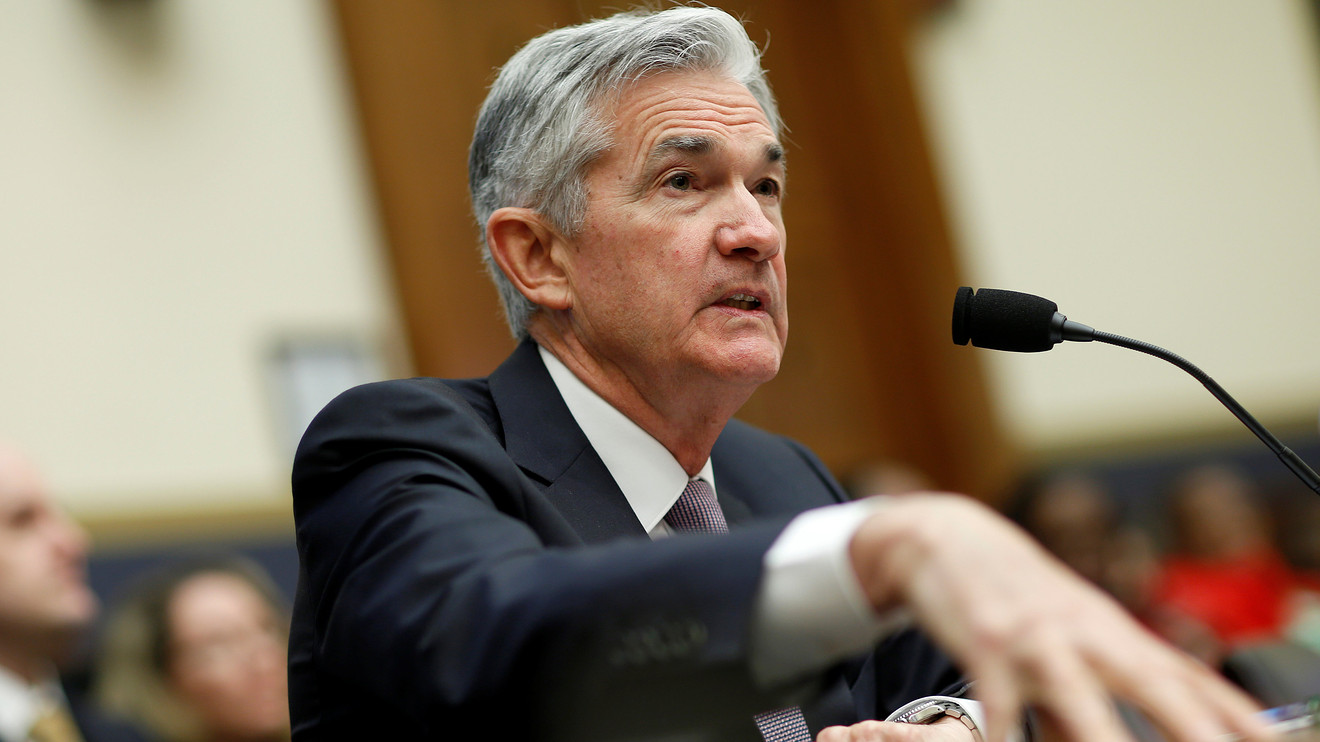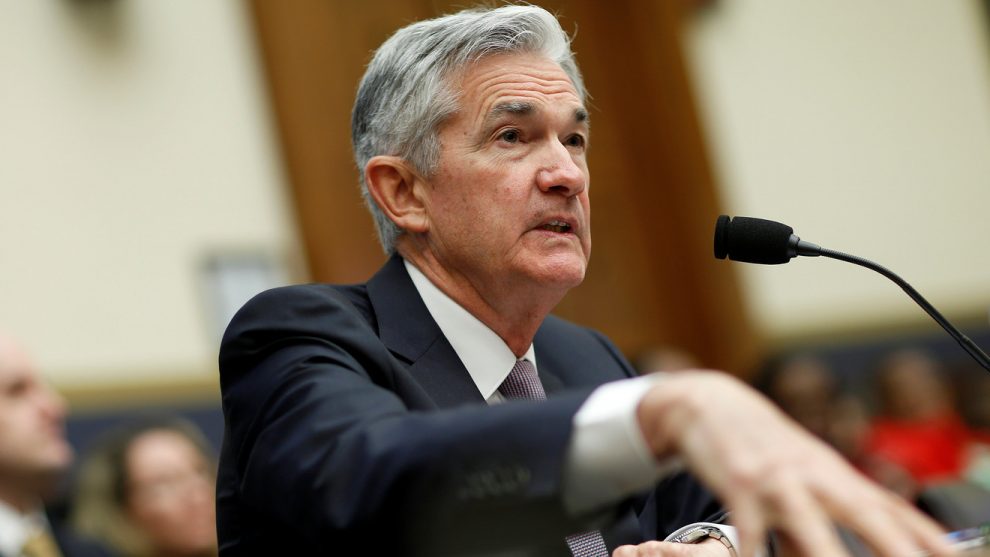
“One swallow does not a summer make, nor one fine day”, as Aristotle once said.
The US labor market saw the best jobs growth of the year in June, but markets are still see a 100% probability of an interest rate cut at the Federal Reserve’s next meeting on July 30-31 and these hopes are helping to drive stocks to record highs.
Despite Friday’s pullback in stock prices on the better-than-expected payrolls data, the Dow DJIA, -0.16% still ended the week up 1.2%, the S&P 500 index SPX, -0.18% was up 1.7%, and the Nasdaq Composite index COMP, -0.10% rose 1.9%, with all three benchmarks within striking distance of their all-time highs.
“The jobs report is reassuring investors that the domestic economy is solid,” Alec Young, managing director of global markets research at FTSE Russell told MarketWatch. Nevertheless, he still expects the Fed to cut interest rates as “insurance,” in case data on the U.S. economy starts to take a serious turn for the worse.
U.S. payrolls rose by a 224,000 in June, according to the Department of Labor on Friday, recovering from May’s weak result of 72,000 but employment growth in 2019 has averaged 172,000 jobs per month, well below 2018’s average of 223,000 per month, suggesting U.S. economic growth may be at least reverting to the mean after last year’s boost from Trump’s tax cuts in 2017.
“To find any justification for this cut you have to look globally,” Young added, arguing that slowing global economic growth, combined with unconventional monetary policy in Europe and Japan, have caused global investors to flock to U.S. government bonds, with the U.S. 10-year Treasury TMUBMUSD10Y, +0.00% yielding less than the target federal funds rate of between 2.25% and 2.5%, since May.
Labor market data tends to be a lagging indicator, while more forward looking data still suggest U.S. economic growth is weakening as President Trump’s trade war undermines business confidence and spending globally.
Outside of the labor market, economic data has deteriorated significantly. In June, IHS Markit’s manufacturing index fell to 50.1, the worst reading since 2009, while the ISM manufacturing index fell to its lowest reading since late 2016, slumping to 51.7. Any number above 50 is considered an expansion in factory activity, but the manufacturing gauge has dropped steadily since mid-2018.
Trade War Warrants Worries
Stock markets rallied earlier last week on news that U.S. President Trump and Chinese President Xi Jinping had agreed to restart trade negotiations and Chinese purchases of U.S. agricultural products, while the U.S. pledged to not implement new tariffs and to allow U.S. technology companies to sell some goods to Chinese telecom giant Huawei Technologies Inc.
But details as to the nature of the reprieve remain lacking, and while there are reports that American negotiators will visit Beijing this coming week, the path to a deal is still unclear. Beijing has given no details as to the timing and magnitude of agricultural purchases, while Chinese Ministry of Commerce Spokesman Gao Feng said last Thursday that a deal could only be reached if the U.S. agrees to remove all tariffs, contrary to the American position that some tariffs must remain in place to assure Chinese compliance.
“The Trump administration’s willingness to actively use trade barriers as a tool of broader foreign policy remains a key risk to monitor despite the agreement to a second truce between the US and China on trade negotiations,” JP Morgan analyst, Bruce Kasman, wrote in a research note. “The business sector response to this approach, rather than the direct impact of higher tariffs, poses the greatest threat to global growth, in our view.”
Spending by US companies on plants and equipment is also slowing as the impact of last year’s tax cuts wears off and the trade disputes with China undermines confidence. Morgan Stanley’s index of expected capital expenditure by US companies dropped to its lowest level in two years last month. Weakening capex growth comes after an increase last year, when the U.S. administration lowered the corporate rate from 35 per cent to 21 per cent, triggering a jump in corporate investment, Morgan Stanley chief economist, Chetan Ahya, noted.
The impact of the trade war is showing up in industry data also. General Motors Co GM, +0.89% and Ford Motor Co F, +0.00% last week said their quarterly sales in China fell. GM’s vehicle sales in China for the June quarter dropped 12.2%, while Ford’s sales slumped by 21.7%. For the first quarter of this year, Ford’s sales in China tumbled 35.8 percent while GM’s skid 17.5 percent.
The slowdown is hitting the U.S. trucking industry also. After a stellar 2018, trucking shipments have plunged during the past six months, according to the Cass Freight Index. “Bottom line, more and more data is indicating that this is the beginning of an economic contraction” said Donald Broughton, founder of Broughton Capital and the lead analyst for the Cass Freight Index.
Earnings Growth Ebbing
U.S. companies will report second-quarter earnings later this month, giving investors a clearer picture of the health of the economy. Earnings per share contracted in the first quarter and analyst estimates based on companies’ forward guidance predict a further drop for the second quarter, according to FactSet data.
“Actual corporate profits for all corporations peaked in the third-quarter of 2018, according to the GDP report, at $2.321 trillion,” according to Ned Davis of Ned Davis Research. “They fell to $2.311 trillion in the fourth quarter and fell to 2.252 trillion in the first quarter of 2019.”
Yet U.S. stock index benchmarks hit all-time highs last week, even as bond yields fell to levels typically signaling a forthcoming recession.
The apparently contradictory phenomena may perhaps be explained by corporate stock buybacks that is helping to power an equity market rally and masking an economy-wide fall in corporate profits for nearly a year, according to Davis.
Operating earnings per share, however, for the S&P 500 index have continued to climb higher as a result “of a lot of creative accounting, including massive buybacks,” Davis added.
In the 12 months to March 2019, corporate stock buybacks totaled $823.2 billion on $1,129.4 billion in earnings. For the same period the year before, buybacks totaled $575.3 billion on earnings of $986.5 billion. U.S. companies bought back $4.7 trillion of their own shares from 2009 through 2018, according to S&P Dow Jones Indices.
Read: Gap between S&P 500’s gains and disappointing U.S. data largest on record
Powell And Possible Tantrum
Faced with what Federal Reserve chair Powell has called the “cross currents” from Trump’s trade war hitting recent economic data and corporate results, markets expect the central bank to cut interest rates later this month.
The danger is that any failure to deliver on lower rates could spark a market tantrum similar to the so-called “taper tantrum” of 2013 that triggered a spike in U.S. Treasury yields, after investors learned the Fed was putting the brakes on its quantitative easing (QE) program.
Powell’s semi-annual testimony to Congress on Tuesday this coming week and the publication of the minutes of the June FOMC meeting on Wednesday may provide more clues.
“A rate cut in July is still all but inevitable,” wrote Luke Bartholomew, investment strategist at Aberdeen Standard Investments. “Employment growth remains a bright spot amid a fairly mixed bag of US data and yet markets have come to expect a cut now, so will fall out of bed if they don’t get one.”
But at the June Fed meeting the median forecast by Fed officials was for no rate cuts in 2019 and some voting members of the Fed’s interest rate setting committee, like Fed Vice Chairman for Supervision, Randy Quarles, have publicly taken aim at justifications for a rate cut.
“The level of certainty [that the Fed will cut in July] is not justified,” said John Vail, chief global strategist at Nikko Asset Management in an interview, pointing to recent comments by Federal Reserve Vice Chairman Richard Clarida, who said in June that the central bank can’t be “handcuffed” by the markets.
Still, Vail admitted that stock markets appear to believe they can still expect a rate cut. “At least in the short term markets believe they can have its cake and eat it too,’ he said.











Add Comment